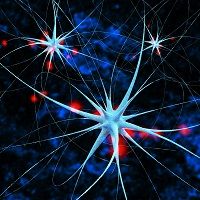Article
Generating Cells to Repair Peripheral Nerve Injury
Author(s):
A combination of small molecules can change cells slated to be human skin cells into cells that support and repair nerves, called Schwann cells, according to findings published in the journal Development.

A combination of small molecules can change cells slated to be human skin cells into cells that support and repair nerves, called Schwann cells, according to findings published in the journal Development.
Researchers from Newcastle University in the United Kingdom acknowledged that a region within hair follicles, called the bulge, contained skin cells intermixed with cells from the same tissue that producers Schwann cells. Using that knowledge, the researchers wondered if the follicle cells could be coaxed into becoming Schwann cells instead.
“We then used pertinent small molecules to either enhance or inhibit pathways that are active or inactive, respectively, in the embryo during Schwann cell differentiation,” study author Maya Seiber-Blum explained in a press release.
The researchers were able to generate “large and pure populations” of human Schwann cells, the press release continued. The Schwann cells displayed Schwann cell morphology and relevant markers, the researchers added. Additionally, the researchers said the cells functioned as Schwann cells and were able to interact with nerves in vitro.
“The next step is to determine, for example, in animal models of peripheral nerve injury, whether grafts of these Schwann cells are conducive to nerve repair,” the authors wrote.
The authors believe that the findings of the study indicate a future for biologically relevant and accessible cell development source that can create sufficient quantities of Schwann. The researchers said that these generating centers offer potential for the repair of peripheral nerve injuries.
Elsewhere in the world of peripheral nerve injury, findings have suggested that neuropathic pain from peripheral nerve injury may be caused by the decrease of expression in spinal cord cells, as previously reported by MD Magazine.
Additionally, MD Magazine discussed the possibility that peripheral nerve injuries may be repaired in the future by harnessing the abilities of the brain repair mechanism known as axons. However, in both of these cases, each set of researchers indicated that further research is required to understand, test, modify, and find success using each of these methods to boost healing in peripheral nerve injury cases.





